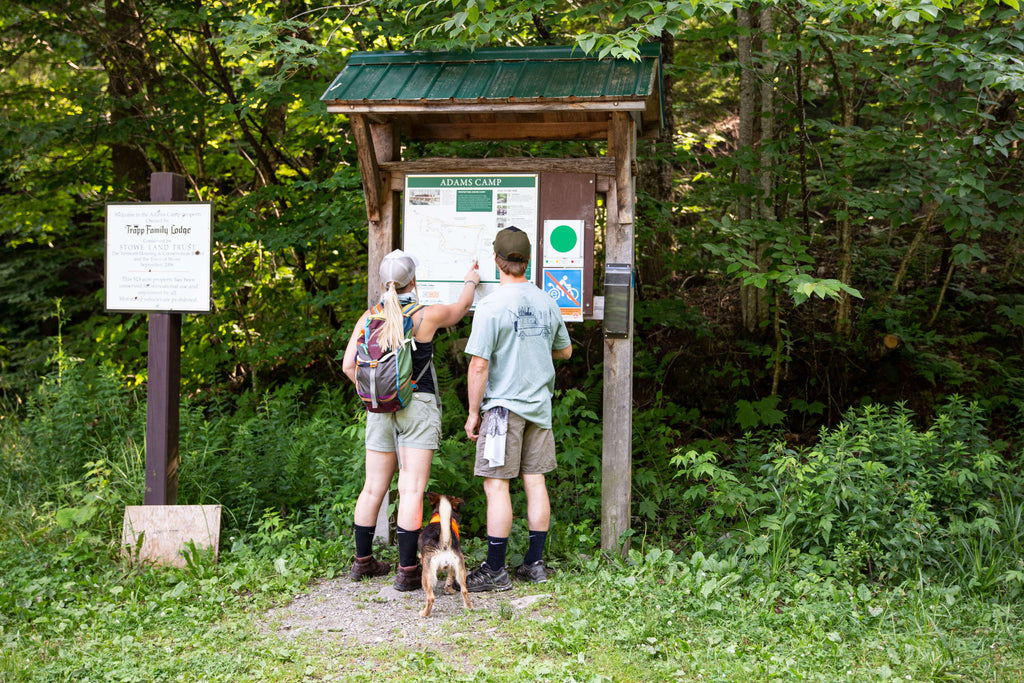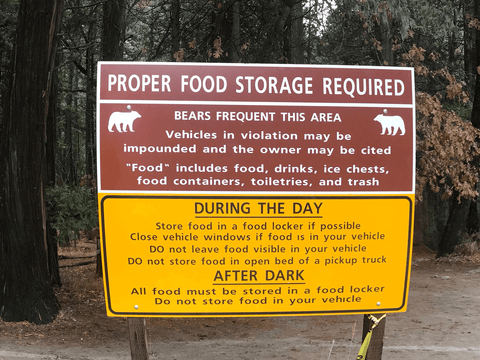How to be a Good Trail Steward

Parks across the States are starting to open back up again, and that means more people will be taking to the trails and the mountains - especially with the weather warming up, and the days getting longer. As we continue to adventure in a bit of a different light (social distancing, wearing face coverings, using sanitizer or wipes after visiting park facilities) it’s also important to remember that the trails deserve our respect. If you’re anything like us, seeing trash on the ground at a trailhead or along your hike is infuriating. So, how can you be a good trail steward while you seek your time outdoors? We’ve got some tips.

Pack in, Pack out
The most obvious, the most talked about, and arguably the most important.
What’s in your pack when you hike? For many of us, our packs contain water, snacks, a summit treat (because reaching that peak deserves a celebration), tissues, a first aid kit, and extra layers. And this is just for a day hike! For those thru-hiking or camping, it’s a whole different story. There’s additional food, tools, gear, etc. If you're hiking with your dog, that also adds another layer - treats, whistles, a leash, and bags are among the few extra things that you might have stowed away for walks in the woods with Fido.
We understand that accidents happen – the wind picks up right after you blow your nose, and your tissue is gone before you know it. You’re enjoying that summit PBJ and the plastic wrap never makes it back in your pack.
But one of the best ways to protect our trails is by being sure what you pack in, you also pack out. Some easy ways to do this:
- Stash your snacks, tissues, summit treats, etc. in an easy-access, zippered section of your pack. There might still be the occasional accident, but if your pouch zips close, you can be sure that when you put that wrapper or used tissue back in your pouch, it won’t fly away.
- Perhaps your summit treat is a can of beer. Be sure to bring that can back down the mountain, and recycle it once you’re home. Consider putting a koozie on your beer can before you leave home that morning. You’ll be more likely to remember your empty can if it has that beloved koozie on it.
- Stay away from plastics as much as you can, and use re-usable items instead. Maybe consider wrapping your summit sammie in something like Bees Wrap, or even a small, lightweight Tupperware.
Not all of your fellows on the trail will be as eco-friendly as you are. If you see some trash or wrappers on the trail, and you have room in your pack, pick up after your neighbors. Karma, my friends.

Read local trail guides and visit park websites
Before you plan your weekend hike, check with your local parks and trail resources online to see which trails are open and the conditions of each trail. In the northeast, for example, trails often take a bit to open up due to mud season. Hiking on muddy trails isn’t just a risk to you – although we recommend always having a first aid kid on hand, because muddy trails can lead to slips and falls.
Hiking on muddy trails puts the sanctity of the trail (and nature around it) in harm's way. It can cause soil compaction and erosion, damaging the trail and surrounding vegetation. A lot of the time, the trail might look like it’s in great (dry) condition at the trailhead. This doesn’t mean it will hold true when you start to get higher up. If you see extreme mud / wet rocks on the trail ahead, turn around to protect the trails and nature around you.
There are other things that could cause a trail to close. Extreme weather (heat, storms), landslides, avalanches, damage, etc. A little bit of research ahead of time can go a long way in preventing you from taking a long drive to a closed trail or getting yourself involved in a dangerous situation.

Stop and read the notices at the trailhead
If the trail you’re tackling is part of a park, it will most likely have a bulletin at the access point. If there is a sign-in sheet, be sure to sign in (bring your own pen, and use hand sanitizer afterwards). More importantly, check the bulletin for announcements. These can include warnings about wildlife, trail warnings (landslides, conditions), as well as vegetation to be aware of.
Abide by all trail signs and postings
Hitting a trail that reaches the alpine zone? Know where to walk. Most trails have signs that will tell you where to hike - i.e. remain within the ropes. This is to protect the vegetation that exists at higher altitudes.
Perhaps you live somewhere or are visiting an area where landslides and rock slides are an issue. Constant vigilance is key in those areas. If you feel that something is off, or hear something in the distance, be aware of your surroundings. It could just be a small animal, or another hiker. But it could also be major rock falls, and the last thing you want to worry about is getting stuck in a precarious situation.
The same thing goes for signs along the trail. If you see a caution or warning when you're close to the summit - adhere to it. The sign was put there for a reason, and you could be putting yourself and others (rescue operators) in harms way.
 |
 |
Being a trail steward
Pending where you live, you have different things to be cautious of. Here in our great state of Vermont, mud season is a big concern. Those of you in the Rockies have to deal with higher elevation and altitude. In the badlands, extreme heat and cactus spines. In the Canyon area, dry desert conditions and elevation. Pacific north west, wet and rainy conditions, and large, non-human creatures sharing the woods with you (i.e. bears).
Pack with focus. Pack with your specific hike in mind. And pack in KNOWING that you will pack everything back out with you.
We fully encourage summit coffee + peanut butter fluff sandwiches (my personal treat of choice when reaching the top) but with great snacking and packing comes great responsibility, and it’s important that we take care of the trails we love – ensuring they’re around for the next generation of adventure-seekers. And if that means carrying some empty plastic/cans or used tissues back down the mountain with us, well then, we think it’s worth it.
If you're interested in taking your trail stewardship to the next level, share information with your friends. Talk to people about the trails you frequent. Consider volunteering with a local organization to clean up the trails one season. There are many ways to ensure our trails remain in great condition, and if every hiker is aware of small steps they can take to be a better trail steward, we - and the trails - will all be better off in the long run.
Shop Turtle Fur for the comfiest outdoor activewear clothing and hats.











